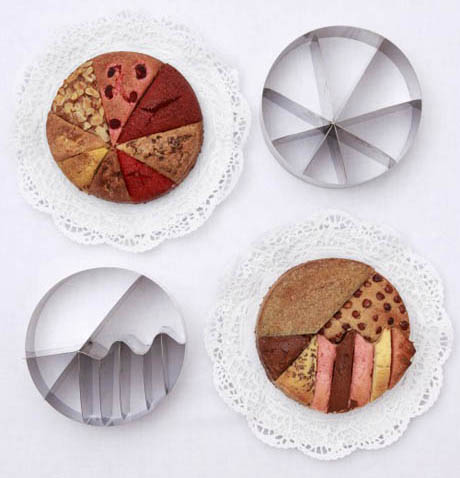
IMAGE: Cake, reformatted by Danklhampel, image via Strange Harvest.
In the first decade of the twentieth century, Austrian architect Adolf Loos boldly proclaimed, “The evolution of culture marches with the elimination of ornament from useful objects.” Frills and ruffles, cornices and entablature, even iced gingerbread — all these decorations could, in his view, be blamed for keeping human civilisation trapped in a wasteful cycle of obsolescence.
Ornamented objects last less time in aesthetic terms than they do physically, Loos explained in his 1908 polemic, “Ornament and Crime,” and thus represent “a crime against the national economy,” not to mention “wasted manpower” and “ruined materials.” Fashionable evening dresses, decorative cabinetry, and carrots, if subjected to fancy recipes involving honey and nuts — for Loos, they were all regressive distractions, unworthy of a culture that also contained Beethoven and Wagner. The inventions of the truly “modern man” are, according to Loos’ lofty final words on the subject, “concentrated on other things.”
What, then, of those crafts whose sole purpose is ornamental? Food, hair, and skin are undoubtedly functional, but cake decorators, hairstylists, and tattoo artists are, by Loosian definition, design criminals. Architect Sam Jacob asked a new generation of Austrian designers to engage with these degenerative arts; their playful yet thought-provoking projects are on display at Vienna’s MAK museum until November 14.
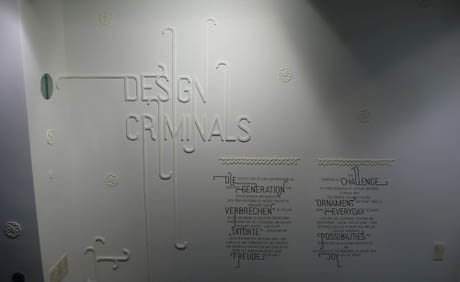
IMAGE: Pastillage, a decorative sugar technique more commonly found on wedding cakes, was used by Practice and Theory to create the wall text for the Design Criminals exhibition, image via Strange Harvest.
Type designers Practice and Theory reinvented pastillage, scaling up traditional sugar sculpture techniques to create the wall text and graphic communications for the entire exhibition. The tactile white ephemerality of their iced lettering actually appears far better suited to its function than the vinyl cut-outs usually applied to and removed from museum walls for each new show.
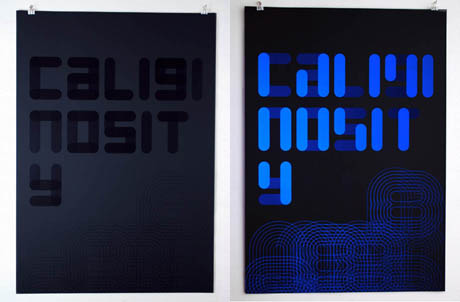
IMAGE: Not related at all, but this poster by Practice and Theory, designed to celebrate the word “‘caliginosity,’ meaning ‘dimness,’ ‘darkness,’ one last time before it got deleted from the dictionary,” is too wonderful not to include in this post.
Mischer’Traxler, whose gorgeous Reversed Volumes appeared on Edible Geography earlier this year, created a cake-decorating machine that allows each visitor to choose the amount of ornament they wish to apply to their cake. The machine is part of their “Till You Stop” series, an ingenious new method of manufacture that blends automated processes with customer input to create unique products on a mechanical line.
It also, write the designers, “forces people to think about the amount of decoration they actually like.”
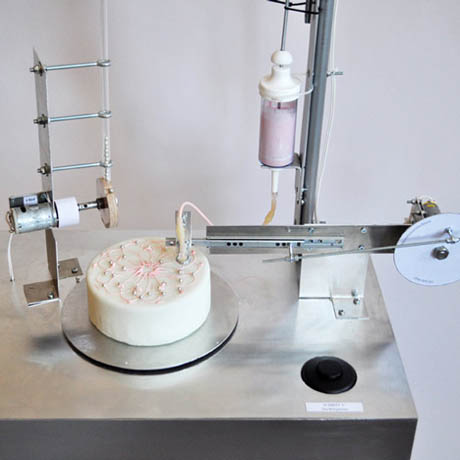
IMAGE: Mischer’Traxler’s “Till You Stop” cake-decorating machine. Image via Dezeen.
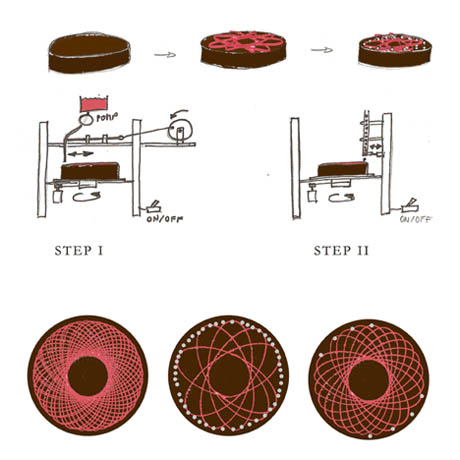
IMAGE: Sketch by Mischler’Traxler for their cake-decorating machine, image via Dezeen.
Will the exhibition visitors ultimately achieve enlightenment, and eschew pink icing and silver baubles altogether? On the evidence so far, it seems not — but by comparing differently decorated cakes side-by-side, Misher’Traxler’s installation does demonstrate the arbitrary nature of ornament and style.
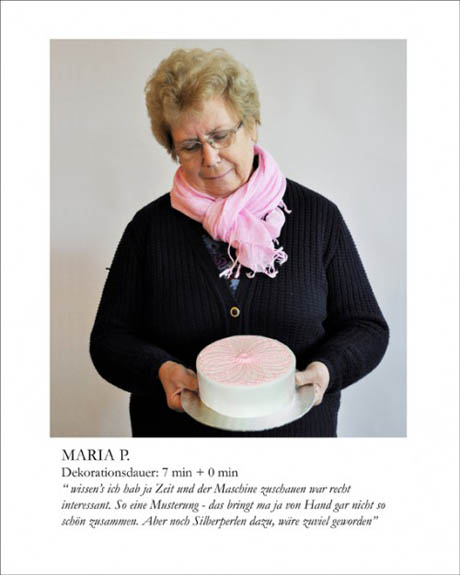
IMAGE: Maria P. with her choice of criminal ornament, image via Strange Harvest.
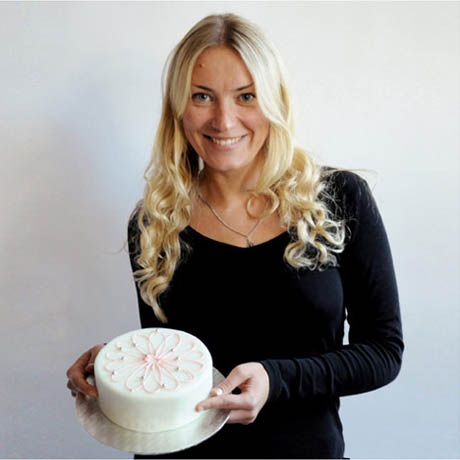
IMAGE: Does using less icing on her cake make this woman less of a criminal? Image via Dezeen.
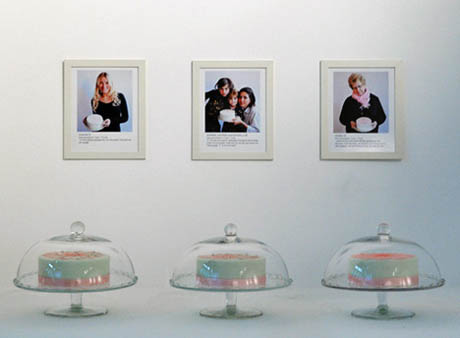
IMAGE: Mischer’Traxler-induced cake-decoration variation, image via Dezeen.
Finally, Loos himself might be proud of Danklhampel’s contribution to the show. Their baking tin removes the need for icing altogether, reformatting cake into an eye-catching collage that also happens to encode a “participatory social action plan.”
In a lovely example of form following function, different-sized portions of different cake mixtures are thus arranged to both create their own surface ornament and invite us to re-imagine how we serve, share, and eat this staple food of celebratory ritual.
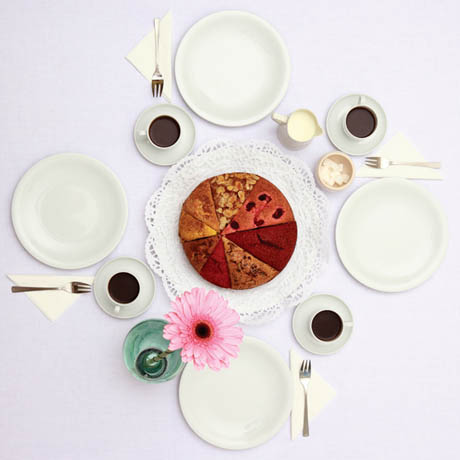
IMAGE: Danklhampel’s cake tin redesign, image via Strange Harvest.
For more Loosian design crimes, including tattoos and braids, visit MAK Vienna before November 14, and/or read curator Sam Jacob’s post on the subject on his excellent blog, Strange Harvest.
2 Comments
Wow, love this thought-provoking review! I could write a thesis in response to Mr. Loos, from the viewpoint of a cookie decorator. (I posted a link–with a couple thoughts–to your review on my other blog, ediblecrafts.craftgossip.com.) Thanks for sharing this!
Not at all sweet: pig brains trigger autoimmune response in pork processing plant employees @ http://places.designobserver.com/entry.html?entry=18918